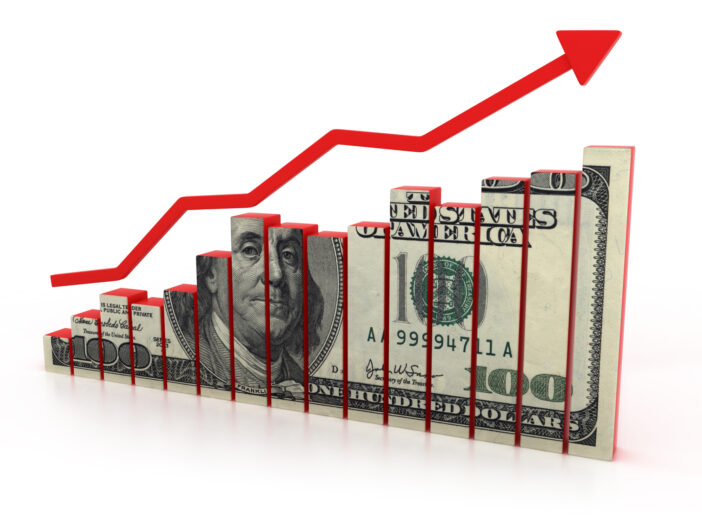In Friday’s news was this update from CNBC: ‘Inflation rose by 0.4% in April and 4.7% from a year ago, according to key gauge for the Fed’:
‘Inflation stayed stubbornly high in April, potentially reinforcing the chances that interest rates could stay higher for longer, according to a gauge released Friday that the Federal Reserve follows closely.
‘The personal consumption expenditures price index, which measures a variety of goods and services and adjusts for changes in consumer behaviour, rose by 0.4% for the month excluding food and energy costs, higher than the 0.3% Dow Jones estimate.
‘On an annual basis, the gauge increased by 4.7%, 0.1 percentage point higher than expected, the Commerce Department reported.’
Inflation is going up, not down!
The misery olympics
Many years ago, economist Arthur M Okun came up with a Misery Index by combining inflation with unemployment. Alone, each is a nuisance. Together, they are, well, misery.
Since then, other economists have added their fillips — connecting interest rates and GDP growth to the index. And then, Steve Hanke — at Johns Hopkins — computed the index for the rest of the world, as well as the US.
This gives us another measure to answer Ed Koch’s old question: how are we doing?
10 years ago, the US was in the 18th position…trailing nations in the Far East and Scandinavia. Ireland was in the middle of the pack, at #45 from the top (out of 89 nations).
In the latest version, the US has slipped down a few notches…but not catastrophically. It is still in respectable company — along with France, Russia, Portugal, and Austria, neither good nor bad.
Ireland has moved much higher up. It is now one of the least-miserable nations in the world — along with Switzerland, Japan, and the Nordic countries.
We have indices of lifespan, GDP/capita, earnings, fatness, and so forth. By most of these measures, maybe all of them, Ireland has gone up…while the US has been failing for many years.
Of course, these numbers are just averages — and are frequently misleading. In a big country such as the US, it’s hard to generalise. The quality of life is very different in the hills and hollows of East Tennessee than it is in the canyons of Manhattan. And put Warren Buffett in a poor neighbourhood, and average earnings will shoot up. Statistically, everyone will be rich.
Silent battles
In Baltimore, many people lead lives that appear to be as miserable as any on the planet. They have very low incomes — based either on government handouts, petty crime or menial labour. Neighbourhoods are ugly…trashy…and dilapidated. There are no sidewalk cafes. No restaurants. No shops. No artisans. And the schools are horrible.
Five people were shot in Baltimore on Friday. This has prompted the mayor to institute a curfew on teens for this long, Memorial Day weekend. Statistically, especially on a holiday, you’re much more likely to get shot in West Baltimore than in Ukraine. But it’s always much easier to solve other people’s problems than your own. The war in Ukraine is a major feature of the nightly news — it attracts billions in weapons and financial aid. Baltimore’s battle is largely ignored.
Down at the bottom of the Misery Index are the countries you’d expect to see there — Venezuela, Zimbabwe, Lebanon, and Argentina. What they have in common is persistently high inflation. Inflation is not like a heat wave that comes and goes. It is government policy. Once the Feds begin to use it, like a cell phone, it is very hard to give it up. And once inflation becomes persistent, it corrupts the economy, the society and the political system too.
Zimbabwe probably set a new record when its inflation rate rose to 79 billion per cent — per month — in November of 2008. The country fell to pieces. Robert Mugabe, its aging crackpot dictator, was shown the door. People switched to US dollars. There were signs of recovery.
But then, in 2019, the authorities sought to regain control of the nation’s money. They re-introduced the Zimbabwean dollar.
The inflation rate promptly soared again. Scarcely a year later it was more than 700%.
Dollar blues
In Argentina, the inflation rate is more than 100%…and rising. After decades of price increases, hyperinflation, depression, and debt defaults, the Argentine politicians cling tightly to inflation. And by the misery measure, they’ve gone from among the best to among the worst in the space of 70 years.
It was a sad show. But the gauchos may not be in the mood for a sequel. A surprising, and unlikely politician — Javier Milei — is rising in the polls.
In troubled times, politicians look for someone to blame — enemies. Trump pointed the finger at foreigners. He told the nation that it could be great again if it would only stop allowing Mexicans to work in the US…and stop the Chinese from sending us cheaper goods.
Joe Biden looks to the Russians, the Chinese…and sinister Republican ‘White Supremacists’…as his enemies.
The Argentines may be ready for a better explanation. Javier Milei, a former rock and roll singer, and now an economist and radio host, tells voters that it is the ‘political caste’ itself that is to blame. They are the ones who control the government budget and the currency. They spend too much money on corrupt projects and vote-buying giveaways. The system is rigged, he says, in favour of the political elite.
Milei proposes to remove the temptation to inflate by taking Argentina’s money out of its control. He would do away with the peso completely and replace it with the US dollar.
That would be good news for Argentines. US inflation is only around 5%.
It would be good news for the US, too — it could inflate Argentina’s economy as well as its own.
Regards,
 |
Bill Bonner,
For The Daily Reckoning Australia

